Ananthram Swami
SeLR: Sparsity-enhanced Lagrangian Relaxation for Computation Offloading at the Edge
May 01, 2025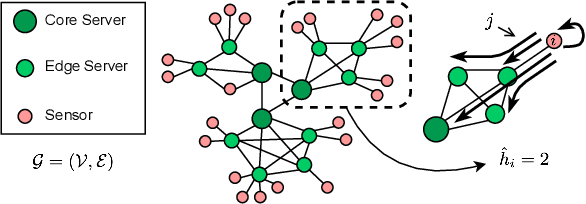
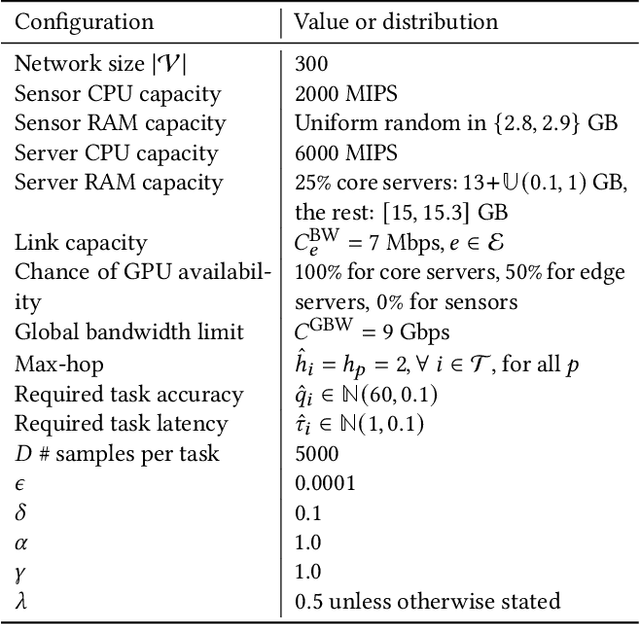

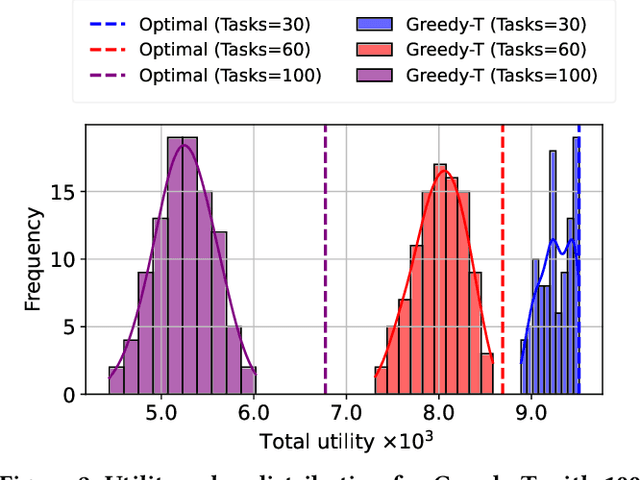
Abstract:This paper introduces a novel computational approach for offloading sensor data processing tasks to servers in edge networks for better accuracy and makespan. A task is assigned with one of several offloading options, each comprises a server, a route for uploading data to the server, and a service profile that specifies the performance and resource consumption at the server and in the network. This offline offloading and routing problem is formulated as mixed integer programming (MIP), which is non-convex and HP-hard due to the discrete decision variables associated to the offloading options. The novelty of our approach is to transform this non-convex problem into iterative convex optimization by relaxing integer decision variables into continuous space, combining primal-dual optimization for penalizing constraint violations and reweighted $L_1$-minimization for promoting solution sparsity, which achieves better convergence through a smoother path in a continuous search space. Compared to existing greedy heuristics, our approach can achieve a better Pareto frontier in accuracy and latency, scales better to larger problem instances, and can achieve a 7.72--9.17$\times$ reduction in computational overhead of scheduling compared to the optimal solver in hierarchically organized edge networks with 300 nodes and 50--100 tasks.
Generalizing Biased Backpressure Routing and Scheduling to Wireless Multi-hop Networks with Advanced Air-interfaces
Apr 30, 2025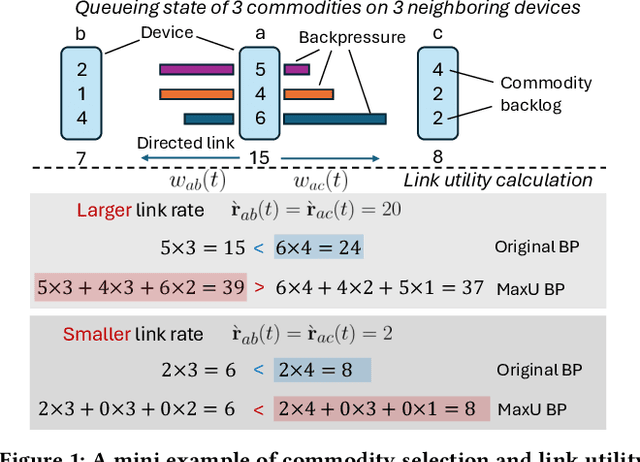

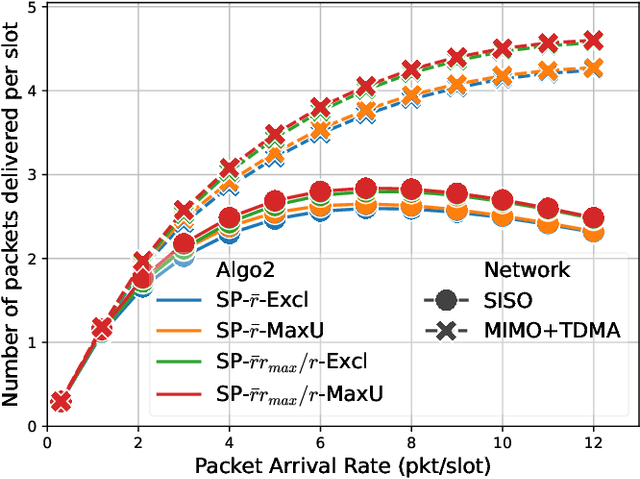
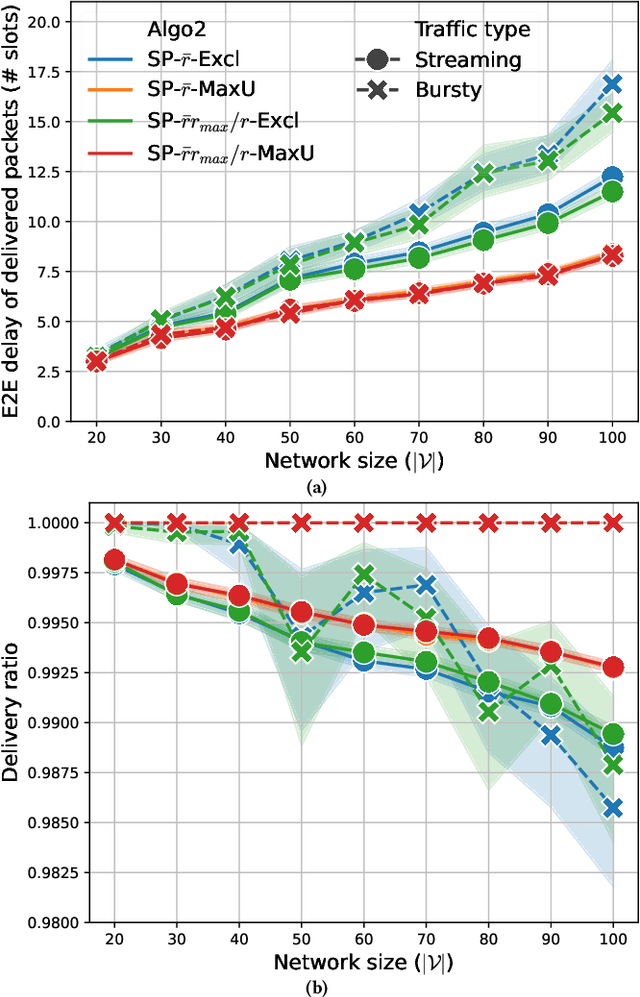
Abstract:Backpressure (BP) routing and scheduling is a well-established resource allocation method for wireless multi-hop networks, known for its fully distributed operations and proven maximum queue stability. Recent advances in shortest path-biased BP routing (SP-BP) mitigate shortcomings such as slow startup and random walk, but exclusive link-level commodity selection still suffers from the last-packet problem and bandwidth underutilization. Moreover, classic BP routing implicitly assumes single-input-single-output (SISO) transceivers, which can lead to the same packets being scheduled on multiple outgoing links for multiple-input-multiple-output (MIMO) transceivers, causing detouring and looping in MIMO networks. In this paper, we revisit the foundational Lyapunov drift theory underlying BP routing and demonstrate that exclusive commodity selection is unnecessary, and instead propose a Max-Utility link-sharing method. Additionally, we generalize MaxWeight scheduling to MIMO networks by introducing attributed capacity hypergraphs (ACH), an extension of traditional conflict graphs for SISO networks, and by incorporating backlog reassignment into scheduling iterations to prevent redundant packet routing. Numerical evaluations show that our approach substantially mitigates the last-packet problem in state-of-the-art (SOTA) SP-BP under lightweight traffic, and slightly expands the network capacity region for heavier traffic.
Joint Task Offloading and Routing in Wireless Multi-hop Networks Using Biased Backpressure Algorithm
Dec 19, 2024

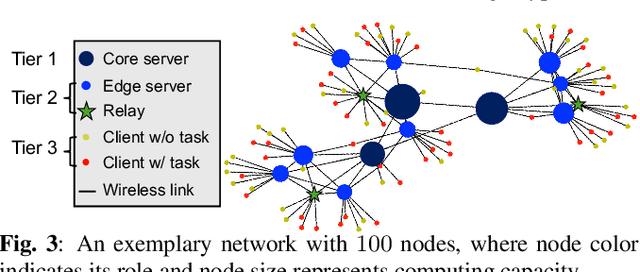
Abstract:A significant challenge for computation offloading in wireless multi-hop networks is the complex interaction among traffic flows in the presence of interference. Existing approaches often ignore these key effects and/or rely on outdated queueing and channel state information. To fill these gaps, we reformulate joint offloading and routing as a routing problem on an extended graph with physical and virtual links. We adopt the state-of-the-art shortest path-biased Backpressure routing algorithm, which allows the destination and the route of a job to be dynamically adjusted at every time step based on network-wide long-term information and real-time states of local neighborhoods. In large networks, our approach achieves smaller makespan than existing approaches, such as separated Backpressure offloading and joint offloading and routing based on linear programming.
Fully Distributed Online Training of Graph Neural Networks in Networked Systems
Dec 08, 2024Abstract:Graph neural networks (GNNs) are powerful tools for developing scalable, decentralized artificial intelligence in large-scale networked systems, such as wireless networks, power grids, and transportation networks. Currently, GNNs in networked systems mostly follow a paradigm of `centralized training, distributed execution', which limits their adaptability and slows down their development cycles. In this work, we fill this gap for the first time by developing a communication-efficient, fully distributed online training approach for GNNs applied to large networked systems. For a mini-batch with $B$ samples, our approach of training an $L$-layer GNN only adds $L$ rounds of message passing to the $LB$ rounds required by GNN inference, with doubled message sizes. Through numerical experiments in graph-based node regression, power allocation, and link scheduling in wireless networks, we demonstrate the effectiveness of our approach in training GNNs under supervised, unsupervised, and reinforcement learning paradigms.
Resilience and Security of Deep Neural Networks Against Intentional and Unintentional Perturbations: Survey and Research Challenges
Aug 03, 2024

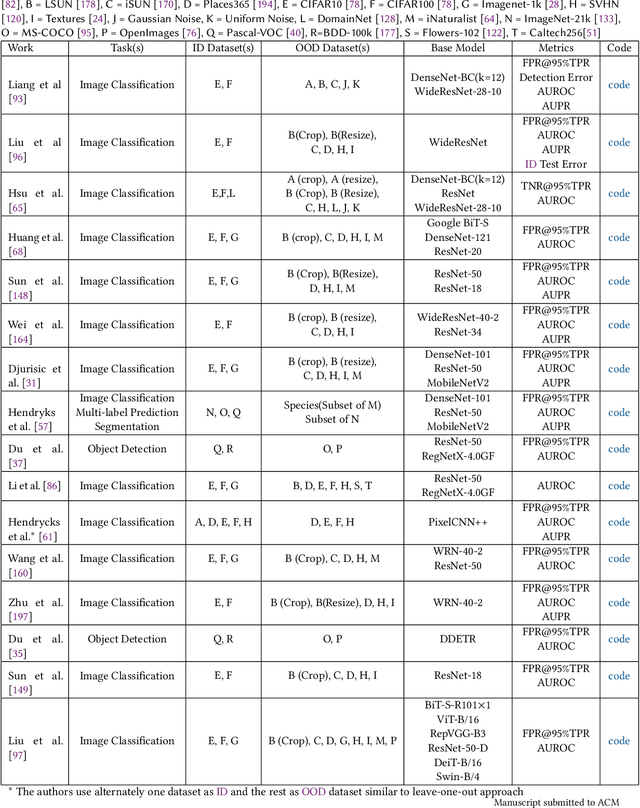
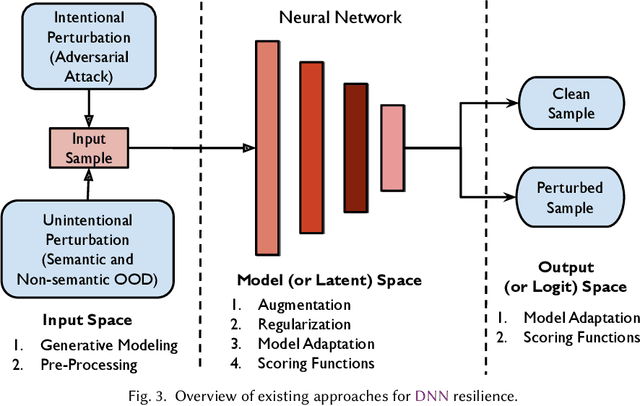
Abstract:In order to deploy deep neural networks (DNNs) in high-stakes scenarios, it is imperative that DNNs provide inference robust to external perturbations - both intentional and unintentional. Although the resilience of DNNs to intentional and unintentional perturbations has been widely investigated, a unified vision of these inherently intertwined problem domains is still missing. In this work, we fill this gap by providing a survey of the state of the art and highlighting the similarities of the proposed approaches.We also analyze the research challenges that need to be addressed to deploy resilient and secure DNNs. As there has not been any such survey connecting the resilience of DNNs to intentional and unintentional perturbations, we believe this work can help advance the frontier in both domains by enabling the exchange of ideas between the two communities.
Biased Backpressure Routing Using Link Features and Graph Neural Networks
Jul 13, 2024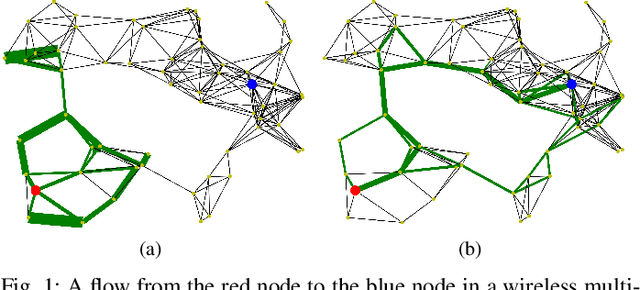

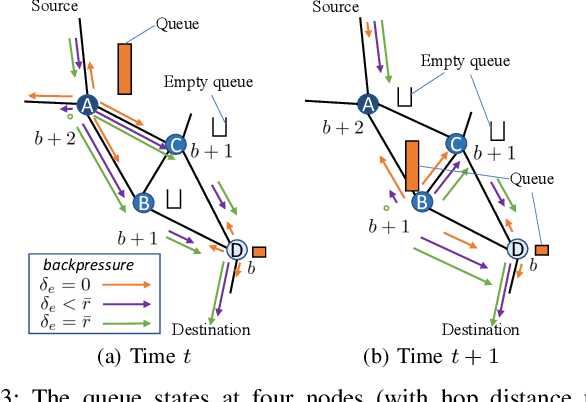

Abstract:To reduce the latency of Backpressure (BP) routing in wireless multi-hop networks, we propose to enhance the existing shortest path-biased BP (SP-BP) and sojourn time-based backlog metrics, since they introduce no additional time step-wise signaling overhead to the basic BP. Rather than relying on hop-distance, we introduce a new edge-weighted shortest path bias built on the scheduling duty cycle of wireless links, which can be predicted by a graph convolutional neural network based on the topology and traffic of wireless networks. Additionally, we tackle three long-standing challenges associated with SP-BP: optimal bias scaling, efficient bias maintenance, and integration of delay awareness. Our proposed solutions inherit the throughput optimality of the basic BP, as well as its practical advantages of low complexity and fully distributed implementation. Our approaches rely on common link features and introduces only a one-time constant overhead to previous SP-BP schemes, or a one-time overhead linear in the network size to the basic BP. Numerical experiments show that our solutions can effectively address the major drawbacks of slow startup, random walk, and the last packet problem in basic BP, improving the end-to-end delay of existing low-overhead BP algorithms under various settings of network traffic, interference, and mobility.
FLASH: Federated Learning Across Simultaneous Heterogeneities
Feb 13, 2024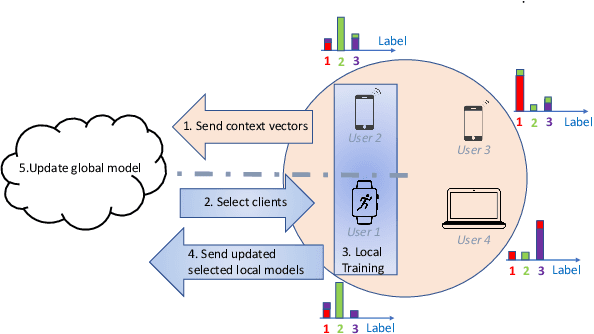


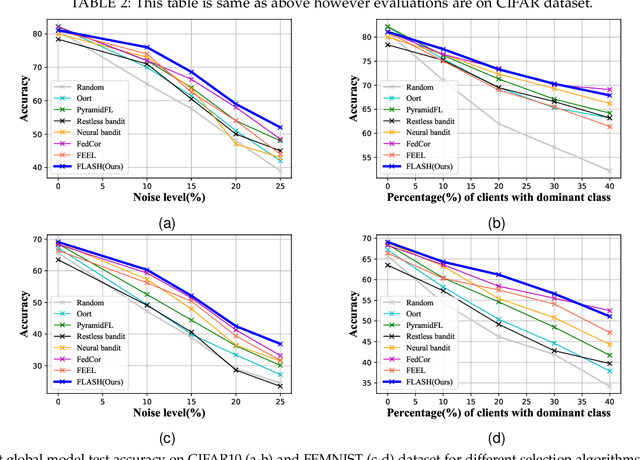
Abstract:The key premise of federated learning (FL) is to train ML models across a diverse set of data-owners (clients), without exchanging local data. An overarching challenge to this date is client heterogeneity, which may arise not only from variations in data distribution, but also in data quality, as well as compute/communication latency. An integrated view of these diverse and concurrent sources of heterogeneity is critical; for instance, low-latency clients may have poor data quality, and vice versa. In this work, we propose FLASH(Federated Learning Across Simultaneous Heterogeneities), a lightweight and flexible client selection algorithm that outperforms state-of-the-art FL frameworks under extensive sources of heterogeneity, by trading-off the statistical information associated with the client's data quality, data distribution, and latency. FLASH is the first method, to our knowledge, for handling all these heterogeneities in a unified manner. To do so, FLASH models the learning dynamics through contextual multi-armed bandits (CMAB) and dynamically selects the most promising clients. Through extensive experiments, we demonstrate that FLASH achieves substantial and consistent improvements over state-of-the-art baselines -- as much as 10% in absolute accuracy -- thanks to its unified approach. Importantly, FLASH also outperforms federated aggregation methods that are designed to handle highly heterogeneous settings and even enjoys a performance boost when integrated with them.
Learning Non-myopic Power Allocation in Constrained Scenarios
Jan 18, 2024

Abstract:We propose a learning-based framework for efficient power allocation in ad hoc interference networks under episodic constraints. The problem of optimal power allocation -- for maximizing a given network utility metric -- under instantaneous constraints has recently gained significant popularity. Several learnable algorithms have been proposed to obtain fast, effective, and near-optimal performance. However, a more realistic scenario arises when the utility metric has to be optimized for an entire episode under time-coupled constraints. In this case, the instantaneous power needs to be regulated so that the given utility can be optimized over an entire sequence of wireless network realizations while satisfying the constraint at all times. Solving each instance independently will be myopic as the long-term constraint cannot modulate such a solution. Instead, we frame this as a constrained and sequential decision-making problem, and employ an actor-critic algorithm to obtain the constraint-aware power allocation at each step. We present experimental analyses to illustrate the effectiveness of our method in terms of superior episodic network-utility performance and its efficiency in terms of time and computational complexity.
Plug-and-Play Transformer Modules for Test-Time Adaptation
Jan 10, 2024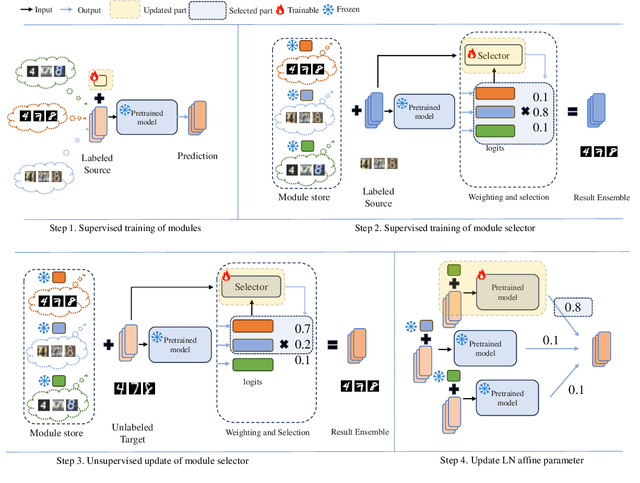

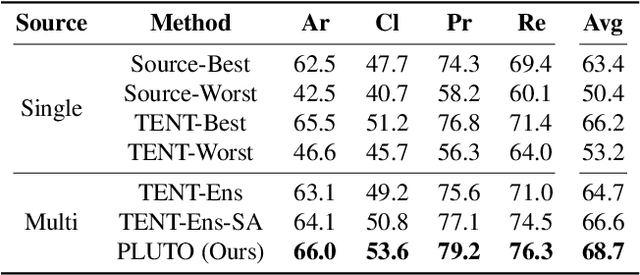
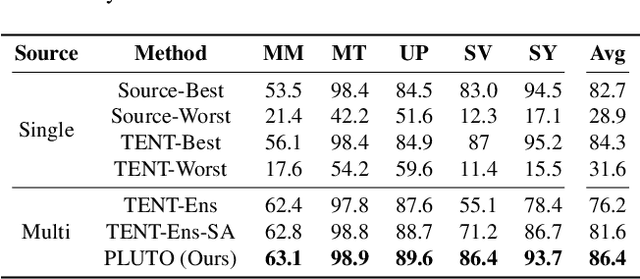
Abstract:Parameter-efficient tuning (PET) methods such as LoRA, Adapter, and Visual Prompt Tuning (VPT) have found success in enabling adaptation to new domains by tuning small modules within a transformer model. However, the number of domains encountered during test time can be very large, and the data is usually unlabeled. Thus, adaptation to new domains is challenging; it is also impractical to generate customized tuned modules for each such domain. Toward addressing these challenges, this work introduces PLUTO: a Plug-and-pLay modUlar Test-time domain adaptatiOn strategy. We pre-train a large set of modules, each specialized for different source domains, effectively creating a ``module store''. Given a target domain with few-shot unlabeled data, we introduce an unsupervised test-time adaptation (TTA) method to (1) select a sparse subset of relevant modules from this store and (2) create a weighted combination of selected modules without tuning their weights. This plug-and-play nature enables us to harness multiple most-relevant source domains in a single inference call. Comprehensive evaluations demonstrate that PLUTO uniformly outperforms alternative TTA methods and that selecting $\leq$5 modules suffice to extract most of the benefit. At a high level, our method equips pre-trained transformers with the capability to dynamically adapt to new domains, motivating a new paradigm for efficient and scalable domain adaptation.
Joint channel estimation and data detection in massive MIMO systems based on diffusion models
Nov 17, 2023Abstract:We propose a joint channel estimation and data detection algorithm for massive multilple-input multiple-output systems based on diffusion models. Our proposed method solves the blind inverse problem by sampling from the joint posterior distribution of the symbols and channels and computing an approximate maximum a posteriori estimation. To achieve this, we construct a diffusion process that models the joint distribution of the channels and symbols given noisy observations, and then run the reverse process to generate the samples. A unique contribution of the algorithm is to include the discrete prior distribution of the symbols and a learned prior for the channels. Indeed, this is key as it allows a more efficient exploration of the joint search space and, therefore, enhances the sampling process. Through numerical experiments, we demonstrate that our method yields a lower normalized mean squared error than competing approaches and reduces the pilot overhead.
 Add to Chrome
Add to Chrome Add to Firefox
Add to Firefox Add to Edge
Add to Edge